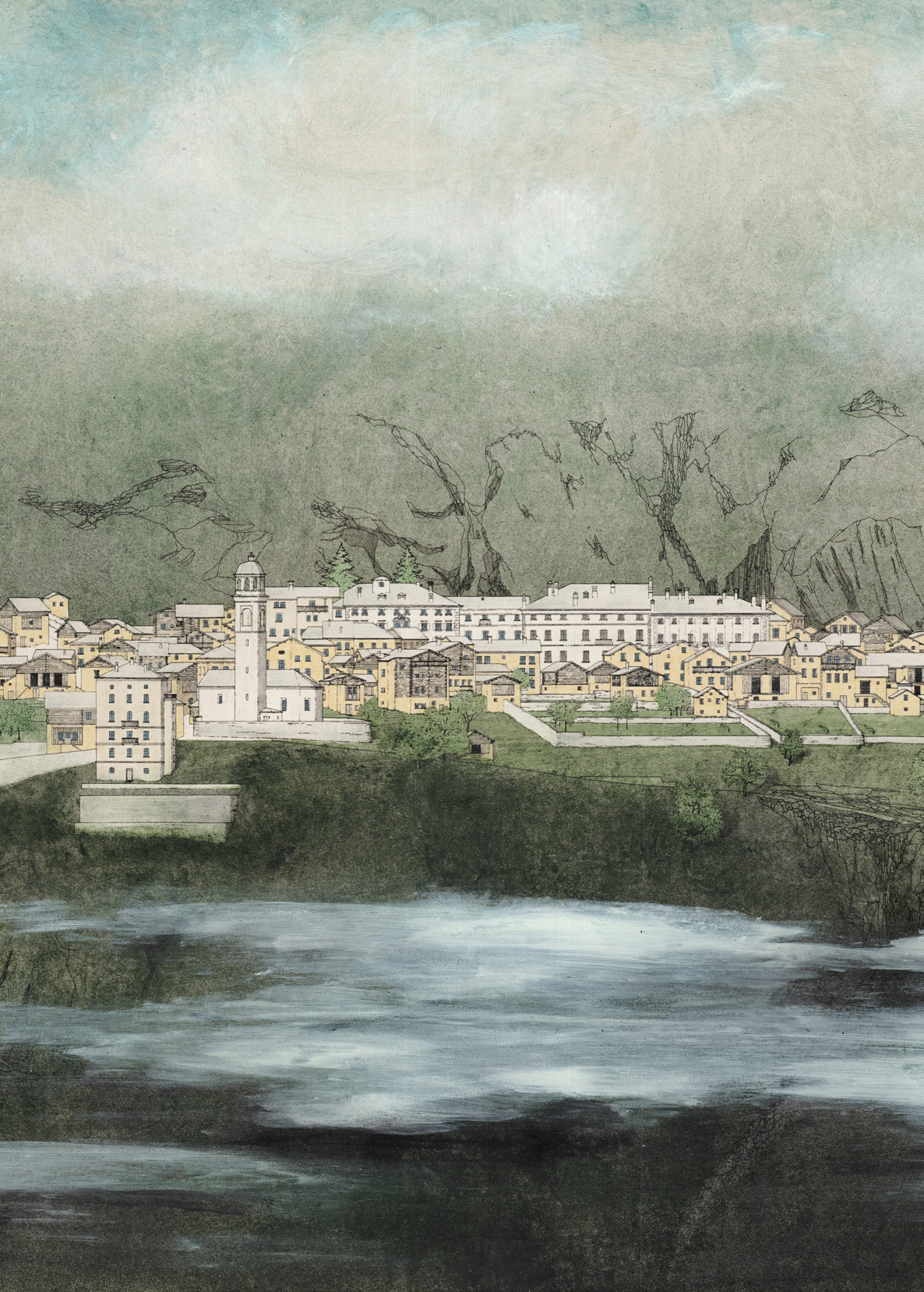
Tacitus’ La Germania is a crucial foundation for any literary analysis of the origins of the domestic constructions in the Alps, where two cultures converge: that of the German log builders and the Latin stone masons. These narrative gains strength from the observation that two distinct settlement typologies are linked to these construction traditions: the former do not live in villages but occupy the territory in a scattered manner with rough constructions, while the latter form urban centres built more civilly with worked stones and bricks. The Alps represent a geographical border, an indefinite, permeable, and absorbent watershed that has facilitated a continuous exchange between these cultures since ancient times. The coexistence of stone and wood is, in fact, the defining characteristic of the Alpine house, particularly in the central Alps. The relationship between the wooden and stone parts of the se buildings assumes the value of a collective ritual. This ritual, celebrated in architecture, expresses the social life, economy, and nature of its territory. The “mixed type” house remained a subject of incessant exploration throughout the twentieth century and the focal point of a heated and fruitful cultural debate, just as the Mediterranean house represented the model of eternal modernity for the rationalist architects of the twentieth century. The essay explores the potential of the Alpine “mixed” house as representative of a model of enduring environmental sustainability.







